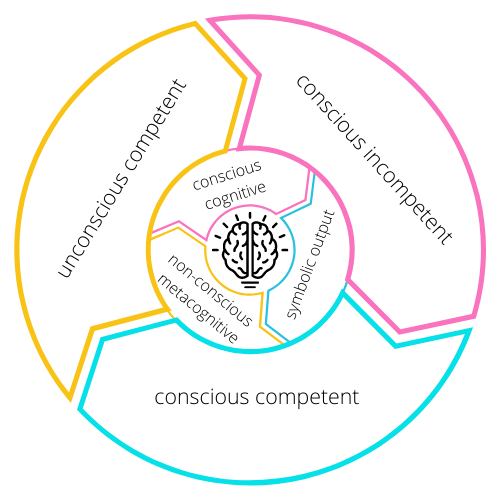| change. To make someone or something different; alter or modify. It also means to replace something with something else, especially something of the same or better; substitute one thing for another. The act or instance of making or becoming different. |
Scrolling through the news these days is not for the faint at heart. Endless articles on racism, diversity and equality coupled in with brutalities and exclusive practices bring opportunity for change, the lyrics from my adolescent playlist break into my thought process. “I’m gonna make a change for once in my life. It’s gonna feel real good, gonna make a difference, gonna make it right” belted out Michael Jackson, and I wince a little. How am I changing this world we live in, with its elitism and egocentrism and every person for themself mentality?
The articles and lyrics tempt all sorts of plans to do better, be better. In reality there is a self invitation to slow down and reframe my thinking first.
Somewhere during my contemplation, I remember the work of Thomas Moore, “…the most minute details and the most ordinary activities, carried out with mindfulness and art, have an effect far beyond their apparent insignificance.” His words echo the covent of change. In my pause, I find myself humming MJ’s song lyrics, “I’m starting with the man in the mirror (oh), I’m asking him to change his ways (oh),” which seems to be saying, “The work starts within.”
My brain is a tool for diversity and inclusion, designed to respond to my mind.
I create thought with my mind, I’m suppose to take responsibility for what I am thinking.
Building a confidence in how to go about this, the important thing is to start somewhere. I look to the work of Dr. Caroline Leaf to switch on my brain. Prompted by three switches that provide a cycle, I think about how we are all wired: non-conscious metacognitive, conscious cognitive, symbolic output in relation to my current state of being unconscious competent, conscious incompetent and conscious competent when it comes to diversity and inclusion.

Equity Consciousness Refresher
To us, equity consciousness falls within three main competencies all focusing on deficit view, rationalization, diversity erasure, and normalization. This is how we break it down:
- Unconscious competent. Work is needed on equity consciousness. Begin by building new skills to become an asset to the people around you at work, home, school and the community.
- Conscious competent. You are doing ok but have the potential to do so much better. Having a foundation is a start, now you can improve to be a better you.
- Conscious competent. You’re in an excellent position to ensuring equity within your sphere of influence. However, there is a need to continuously challenge yourself to keep taking your influence forward.
Combine this with Leaf’s work on forming habits, let’s look at each of the above in relation to the cycle of non-conscious metacognitive, conscious cognitive and symbolic output.
Non-conscious Metacognitive
Have you ever heard anyone say, “My brain just doesn’t turn off.” Well, I hear them, I am one of those people and it turns out, so are you. The non-conscious metacognitive part of our brain operates 24 hours a day, seven days a week, 365 days a year. Think of it as a sieve taking everything in. This is where thinking and thoughts happen and it is also responsible for 90-99% of the action of our minds. Why is this important? It’s important because it drives the conscious cognitive.
Conscious Cognitive
Conscious cognitive is responsible for up to the other 10% of mind action but operates at a much slower rate than non-conscious metacognitive mainly because it is responsible for what the world sees as the output of our thinking. Think of it as decisiveness in the point of contact, engaging the five senses, between external and internal parts of our world. It drives the symbolic output.
Symbolic Output
Remember what I said earlier about it being a cycle in how we’re wired? Well, simply put, whatever we think about the most then grows resulting in symbolic output. “We cannot control the events and circumstances of our lives but we can control our reactions.” (Caroline Leaf, 2013).
The Switch
Here’s where our current state of being unconscious competent, conscious incompetent and conscious competent comes in to play. Every thought in our non-conscious mind feels the pull for symbolic output. Our five senses activate the emotional response almost immediately. This is where the processing between our non-conscious metacognitive and conscious cognitive determines the form of symbolic output. Simply put, if we don’t take time to process, the unprocessed emotion is then dominant. Leaf puts it this way, “If we believe in lies, we process them into physical realities through the conscious cognitive into the non-conscious metacognitive that form the substance we act upon.” That’s right, the cycle flows both directions. It literally becomes the physical realities inside our brains, positive or negative, it’s up to us to choose.
This is self-directed neuroplasticity. Let’s break this one down too. Neuroplasticity is the ability of the brain to form and reorganize synaptic connections, especially in response to learning or experience. What this means is that in changing our thinking, we are changing the brain structures be it in a positive or negative direction, dependent on our state of mind. This is good news for those who are on a self exploration of growing through being unconscious competent, conscious incompetent and conscious competent. After all, it is our choices that create thought process in our brain which in return become actions.
The choice is always our own. Will we be overwhelmed by the marginalization of others? Or, will we be energized by the possibilities recognizing and striving for change brings? I choose to channel my inner Michael Jackson and “…I’m gonna make a change, it’s gonna feel real good, come on (change). Just lift yourself, you know, you’ve got to stop it, yourself (yeah).”
For me, it begins with a mind shift, one thought at a time. Care to join me?
Tap into your influence for the positive, embrace it, allow it to help you see things differently. You offer a unique combination of life experience, perspective, position, and history. No one else in the world brings to equity and inclusion what you do. Bring what you have a little more boldly and you might surprise yourself in how you transform not only your life but also the life of others. We [SEE] you. Want to join our movement? Pick one, or two, or three, or all. You’ll be so glad you did.
- Share. Spread the word through Likes, shares, and following us on social media.
- Reflect. Be a part of our research study by completing our Equity Consciousness® Teaser Test.
- See it. Be it. Sign up for one of our pilot study discussion groups.
- Network. Subscribe to our community so we can continue the conversation.
You can listen in through PodBean.
Resources
Jackson, M. (1988). Man in the mirror. Epic records.
Leaf, C. (2013). Switch on your brain: The key to peak happiness, thinking and health. MI: Baker Publishing Group.
Moore, T. (1992). Care of the soul: A guide for cultivating depth and sacredness in everyday life. NY: Harper Collins Publishers, Inc.

